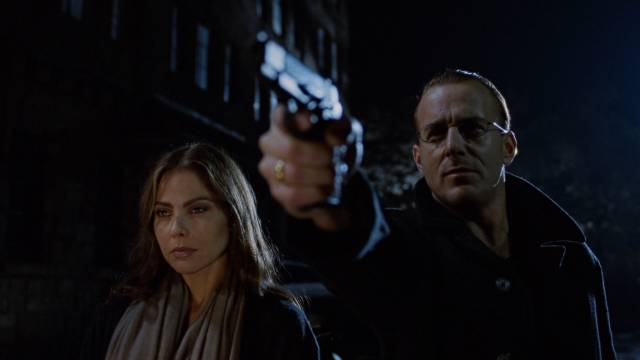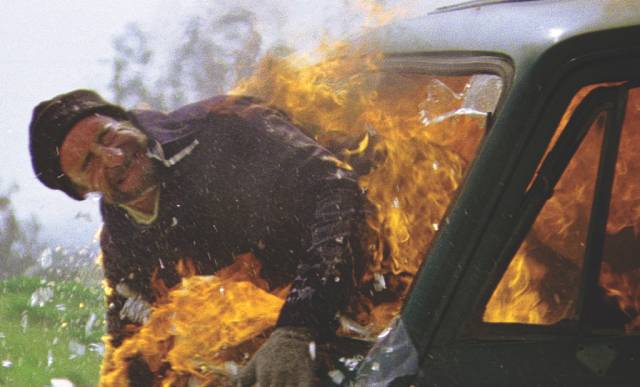
Springtime viewing includes monsters and murderous mayhem, found-footage rawness and classical Hollywood craft, psycho killers and ancient evil, along with a couple of westerns with different attitudes towards violence on the frontier.

A wildly varied selection of recent releases from the BFI, with Pat Jackson’s Western Approaches (1944) transforming propaganda into art via Jack Cardiff’s Technicolor photography; Roddy McDowall’s The Ballad of Tam Lin (1970) infusing folk horror with the Hollywood glamour of Ava Gardner; and Ken Russell turning the famous 1816 house party presided over by Lord Byron on the shores of Lake Geneva into a fever dream of the Romantics’ fascination with love and death in Gothic (1987)

Three two-disk sets from Eureka provide an overview of Universal Studios’ horror movies from the mid-’30s to the early ’50s, in the period when the first wave of early sound horrors petered out and briefly flourished again as low-budget B-movies as the Depression gave way to World War Two. Karloff and Lugosi are joined by notable, if lesser, genre figures like Lionel Atwill and Rondo Hatton in a mix of science fiction and the supernatural, with gangsters and Gothic trappings spicing the mix.

Severin’s recent release of Buddy Giovinazzo’s fourth feature, The Unscarred (2000), on disk reconfirms this outsider as an intriguing auteur; a chamber piece in which the psychological games of four old friends grown increasingly darker is a taut, polished piece of work which sent me back to watch his raw first feature, Combat Shock (1986), again. As technically different as the two movies are, both reveal a filmmaker with a bleak view of the world tempered by a deep empathy for broken people.

Criterion’s two-disk Tod Browning’s Sideshow Shockers showcases three of the director’s best movies, including the peak of his long collaboration with Lon Chaney in The Unknown (1927) and Browning’s masterpiece Freaks (1932) along with the lesser-known The Mystic (1925). Fine 2K transfers and some illuminating extras leave you hoping that more of Tod Browning’s work will turn up on disk in restored versions.

More recent viewing, with excellent restorations of classic fantasies by Arrow – Roger Vadim’s Barbarella (1968) and John Milius’ Conan the Barbarian (1982); a pair of impressive German film school projects – Tilman Singer’s Luz (2018) and Lukas Feigelfeld’s Hagazussa (2017); a couple of entertaining Australian features which mix fiction and documentary in interesting ways – Brian Trenchard-Smith’s Stunt Rock (1978) and Aaron McCann and Dominic Pearce’s Top Knot Detective (2017): and Shredder Orpheus (1990), a low-budget indie version of the Orpheus myth made by Seattle musicians and skateboarders.

Time again to catalogue what I’ve been watching over the past couple of months, but haven’t yet mentioned. First, a mix of throwaway low-brow entertainment and more interesting genre movies from Severin – Italian horror spanning from the ’60s to the ’90s, some low-budget exploitation, and a box set of minor movies featuring Peter Cushing.

Our relationship to movies is complex; we know that we’re watching illusions, yet the intellectual and emotional responses we experience are very real. Movies give us access to a seemingly infinite range of experiences which take us out of out immediate lives. Two recent releases delve into this phenomenon in visceral ways — Giuliano Montaldo’s Closed Circuit (1978) addresses the metaphysics of movie watching with humour and suspense, while Charlie Victor Romeo (2013) provides disturbing access to an aspect of real life we might prefer not to think about: the moments during which flight crews try to deal with catastrophic technical failures immediately preceding air crashes.